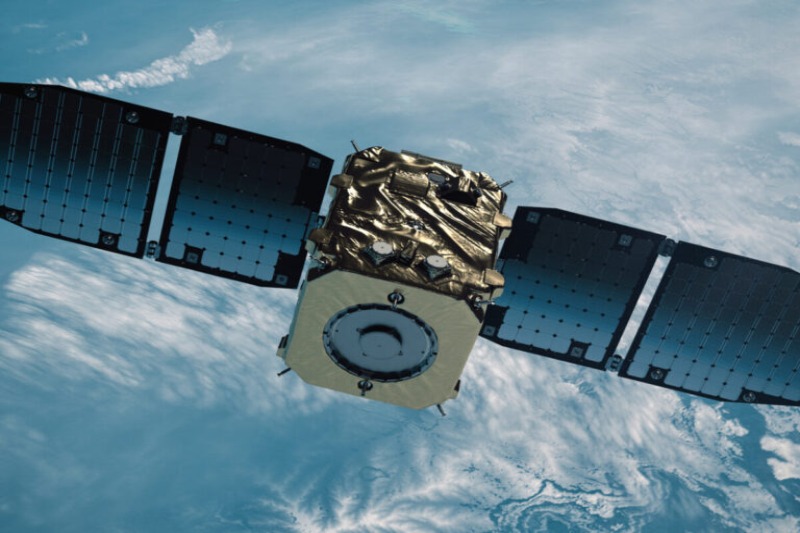A well-funded Japanese business called Astroscale is getting ready to launch a tiny satellite that will accomplish a first for space travel.
Launched by Rocket Lab on Sunday, this new spacecraft will fly toward the now-defunct upper stage of a Japanese H-IIA rocket that has been orbiting the planet for almost 15 years. The satellite will attempt to get within close proximity to the rocket during the next two months, capturing images and executing intricate manoeuvres to navigate the bus-sized H-IIA upper stage as it travels at a speed of about 5 miles per second (7.6 km/s) around the world.
Although these are difficult maneuvers, spacecraft visiting the International Space Station are used to performing similar maneuvers. Although military satellites from China, Russia, and the United States are also capable of performing proximity and rendezvous operations (RPO), these spacecraft have only been known to move in extremely close proximity around objects that are designated as “cooperative” and intended to accept them.
The distinction is that the H-IIA rocket was never intended to host any guests and is now uncontrollably spinning and falling slowly. After launching a satellite to monitor the climate in January 2009, Japan left it in orbit and didn’t look back.
That was, at least, until a few years ago, when Astroscale and the Japan Aerospace Exploration Agency (JAXA) joined forces in a public-private partnership to showcase capabilities that may someday be used by the private sector to clear huge space debris that littered low-Earth orbit. The same robotic technologies might be used for missions involving satellite maintenance or refueling.
“We are putting this debris removal by robotic technology as one of our main technology development areas because safely approaching an object, and also observing the object and capturing the object, is basically a common technology for any on-orbit servicing,” said Eddie Kato, president and managing director of Astroscale Japan.
In Close Pursuit
ADRAS-J, or Active Debris Removal by Astroscale-Japan, is the abbreviation for this expedition. Astroscale’s chief technical officer, Mike Lindsay, wrote on X that “this mission entails the first ever approach of actual space debris and will be a monumental step toward a more sustainable future in space.”
The ADRAS-J spacecraft, which is about the size of a cooking oven and weighs around 330 pounds (150 kilograms) when fully fueled, was constructed internally at Astroscale’s Tokyo headquarters. At 9:52 a.m. EST (1452 UTC) on Sunday, the satellite was launched from New Zealand using an Electron rocket that was provided by Rocket Lab. ADRAS-J launched from the Electron’s kick stage into an on-target polar orbit approximately an hour after liftoff, reaching a maximum height of 370 miles (600 kilometers).
The timing of the launch from Rocket Lab’s spaceport in New Zealand allowed ADRAS-J to enter the same orbital plane as its target, the H-IIA upper stage. Following launch on Sunday, Astroscale stated that the spacecraft was in good health. During a pre-launch interview, Kato stated that when ground workers finish the spacecraft’s initial checkouts in a few weeks, ADRAS-J will start pursuing the spent H-IIA rocket.
By using thrusters to align its orbit with that of the H-IIA rocket, ADRAS-J could be flying as close as 300 feet (100 meters) or less of the abandoned upper stage as early as next month. At first, astrological engineers will use tracking data from the ground to determine the exact location of the H-IIA in space. After approaching closer, ADRAS-J will switch to relative navigation mode using laser ranging sensors, visible and infrared cameras, and both. The upper stage’s orientation, closing rate, and distance will all be measured by these sensors.
Astroscale officials see this as a critical turning point for the ADRAS-J mission, moving away from ground tracking data and toward onboard relative navigation sensors. In order to evaluate the rocket’s spin rate, spin axis, and structural health, ADRAS-J will circle it. The main obstacle facing ADRAS-J is that it lacks power, making it impossible to maintain its position. Additionally, there are no targets or laser reflectors on the upper stage to assist an approaching spacecraft.
This will be the end of the ADRAS-J mission’s JAXA-supported phase. The spacecraft may approach the rocket if all goes according to plan in order to test Astroscale’s sensor suite and automated navigation and guiding systems. By doing this, the engineers of the firm will be able to collect information for a future mission that is planned to actually launch and recover the same H-IIA upper stage from orbit.
“We are targeting to go closer, maybe 1 to 2 meters away from the object. Why? Because the next mission will be to really capture the H-IIA launch vehicle,” Kato told Ars last week. “In order to safely approach to a range where a robotic arm is able to be extended, it’s probably like 1.5 to 2 meters away from the object. We want to demonstrate up to that point through this ADRAS-J mission. Then on the next mission, called ADRAS-J2, we are actually equipping the robotic arm and capturing the H-IIA launch vehicle.”
Topics #ADRAS-J mission #Astroscale #JAXA #space










